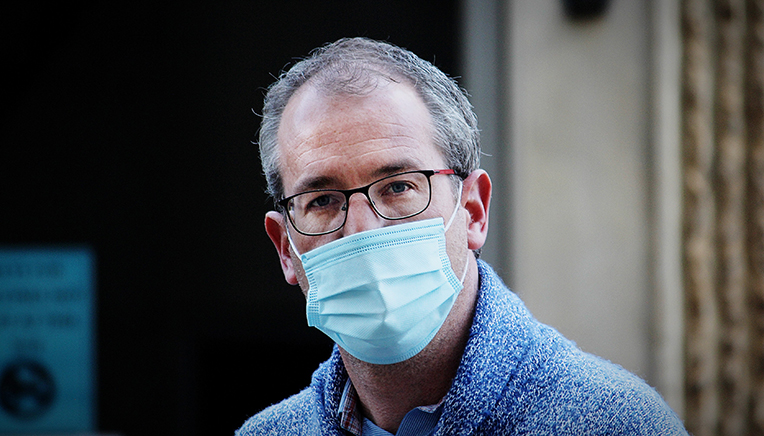It is impossible to quantify the number of hours
Dr Nicholas Pearce, Head of the COVID-19 Task Team for the Universitas Academic Hospital, spent working in response to this deadly virus since the first case was reported in South Africa last year.
According to Dr Pearce, who is the Head of the Department of General Surgery in the Faculty of Health Sciences at the University of the Free State (UFS), the initial preparation phase required many hours of brainstorming, planning, and physical hours working on site. He also spent countless hours awake at night trying to come up with solutions for the many challenges faced along the way. This is in addition to being available telephonically twenty-four-seven for any issues related to equipment, staffing, and facilities.
“I was attending a vascular surgery congress in Germany last year January (2020) when China just announced the outbreak of COVID-19. I noticed an increased number of travellers wearing surgical masks at an airport in the Middle East when I was travelling to South Africa.
“Upon my return to work, I approached management to discuss procurement of PPEs, as it was just a matter of time before COVID-19 would hit South Africa and the rest of the world. When things escalated, I was asked to head the COVID-19 response team at Universitas Hospital,” explains Dr Pearce.
Kind human being with a soft heart

(Photo: André Damons)
Dr Pearce, who was brought up to always strive to be better, is driven and motivated to succeed. He has a very analytical brain and loves challenges. In fact, he does not believe in problems and only sees challenges. This kind human being can sometimes seem quite tough on the outside, but actually has a very soft heart.
“I think it is human nature to want to feel needed. I have an inherent urge to help my fellow human beings. This is also the reason why I became a health-care professional and why I am passionate about teaching,” says Dr Pearce.
With South Africa lagging behind with its vaccination programme, the hard work is far from over for Dr Pearce and his team. Says Dr Pearce: “The initiation of a mass vaccination site posed a whole new set of challenges, which once again required many hours of planning. The initial stages of running the vaccination site required many hours of physical hard work a day. Then there is also the daily operations meeting at 18:00 every weekday to discuss the vaccine roll-out in the province.”
Frustrations and setbacks
For Dr Pearce, this pandemic highlighted the differences between individuals from different social classes in our country. Providing quarantine and self-isolation facilities for individuals who do not have access to such facilities at home is one such example.
“We all have a right to clean water and good quality healthcare. This also includes a right to oxygen. This right to oxygen has proved to be one of our great challenges in managing this pandemic. Delivery of these large amounts of oxygen has been especially challenging. Some days we require in excess of five tons of oxygen,” says Dr Pearce.
(Photo: André Damons)
There have been many frustrations and setbacks on this journey, some of which can be quite demoralising and demotivating, but knowing that he is doing something good for his fellow human beings gives this gentle and diligent healthcare worker a tremendous amount of energy. “Positive feedback from patients and colleagues far outshines all the frustrations and disappointments,” concludes Dr Pearce.
Outside of work
After finishing online meetings at home, Dr Pearce relaxes with his partner by chatting about the day’s events and cooking supper together while enjoying a glass of wine. He also tries to connect with family who lives in Gauteng. Because of work pressures and the pandemic, he has not been able to see them as much.